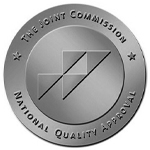 Communication is much more than only spoken words and sentences. From early infancy, parents and caregivers can begin to encourage and promote their child’s overall communication and speech-language skills.
Communication is much more than only spoken words and sentences. From early infancy, parents and caregivers can begin to encourage and promote their child’s overall communication and speech-language skills.
Laurie Kaufman, Speech Language Pathologist at Keystone Audiology and Speech, gives some important tips that all parents and caregivers should know about making sure children are on track with proper communication development.
When do speech and language skills start developing?
Beginning at birth, infants communicate with their cries, smiles, laughter, facial expressions and body language. Before children begin to use words, one-on-one interactions with the important people in their lives significantly influence their language learning. They imitate the speech models provided by their caregivers including gestures (waving, giving kisses), sounds (mama, moo) that evolve into words, and strings of words that evolve into meaningful language. Children who are provided with strong language stimulation develop strong communication and language skills. Research has shown that during the first years of life, children who are talked to, read to and played with have better language skills than their under-stimulated peers. Children with strong language skills are also more likely to enter school ready to learn, are less likely to have difficulties learning to read and are more likely to have academic success.
How can I help my child develop these skills?
From birth, parents and caregivers can encourage the development of a child’s communication and language skills. Caregivers can begin by simply responding to babies’ vocalizations – their cries, coos and babbling. Gaining a baby’s attention by responding to them with eye contact, facial expressions, sound play and commenting encourages turn-taking and promotes positive communication interactions. Even when children are too young to respond with words, it is important for caregivers to provide language stimulation by talking to and engaging their child in “conversation.” Parents and caregivers should consider themselves to be the “narrators” of their child’s life, providing ongoing models of spoken language through labeling, commenting on and describing objects, daily routines and play-based interactions. Children are more likely to imitate first sounds and words when they are used repeatedly within routine activities and play. During play routines, caregivers can pair actions with sounds or words which promotes imitation of both the action and the spoken sound or word, such as saying “Pop” as you pop bubbles or saying “Beep beep” as two toy cars collide. Additionally, singing favorite songs, repeating nursery rhymes and performing finger plays also encourage imitation and language development. Reading books with repetitive text patterns or reading the same books over and over also encourages imitation. Additionally, limiting screen time in favor of personal interactions and play-based opportunities greatly enhances a child’s chances for social and language development.
What are the milestones for speech development?
If you are concerned about your child’s speech, language or hearing, it’s important to know what is considered developmentally appropriate. Every child develops skills at his or her own pace; however, most children acquire certain communication skills within an expected age range. A child who has not yet demonstrated an expected communication milestone, within the expected age range, may have a problem. It is important for caregivers to be aware of communication milestones in order to recognize signs of a delay or disorder, and consult the child’s healthcare provider with any concerns. Below is a list of basic communication milestones within the expected age ranges.
From birth to 3 months, infants should smile, coo and show interest in others. From 4-7 months, babies should babble and engage in sound play. Babies 7-12 months should make a variety of sounds and sound combinations, including early words (mama, dada, etc.), use gestures like waving or pointing, and follow routine commands.
From 12-18 months, they should use 5-10 words, combine words and gestures, imitate the speech of others, point to objects/people in pictures, consistently follow simple directions, and understand and respond to yes/no questions. Toddlers from 1 ½ – 2 years should use approximately 50 words and combine them into two-word phrases, follow two-step directions (pick up your cup and bring it to me), and enjoy listening to stories.
By three years old, children should be able to consistently use three or four word phrases with longer sentences noted, use early grammatical markers such as plurals and present progressives (dogs, walking) and have most of their speech understood by a caregiver. They should enjoy playing and talking with other children, ask and answer questions, follow two-step unrelated directions (give me the ball and go get your coat), and have emerging understanding of concepts including color, space and time.
Can having chronic ear infections impact my child’s speech?
Yes. During ear infections, children can have mild or even moderate hearing loss which makes hearing speech difficult. Speech will sound muffled or indistinct. As your child learns new words he or she may not know how they are actually pronounced. With continued ear infections, your child may not hear all the words in a sentence or not hear the ends of words and therefore not use those sounds or words.
What can I do to protect my child’s hearing?
There are several ways that you can protect your child’s hearing. The most obvious is to use hearing protection when exposed to excessive noise at sporting events, concerts, races and around power tools or mowers. Children that use earphones or headphones should use volume limiting versions until they are able to learn to moderate the volume to safe levels. In addition, maintaining overall ear health can prevent hearing loss. Some tips are: consult a physician if ear infections are suspected, eat a healthy diet that includes lots of vegetables and fruits but limits empty calories, avoid second hand smoke and get exercise to build a strong circulatory system.
This article contains general information only and should not be used as a substitute for professional diagnosis, treatment or care by a qualified health care provider.




